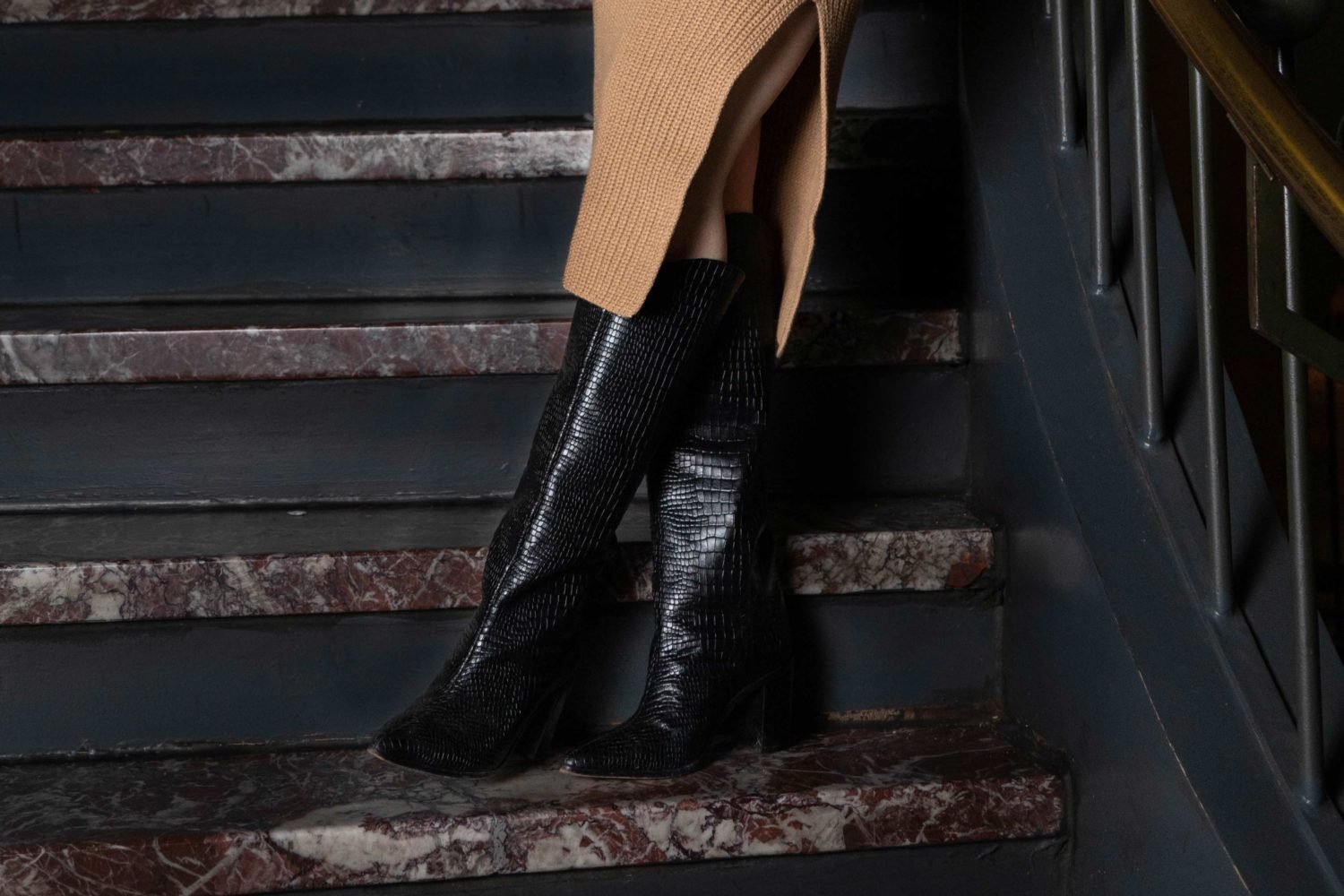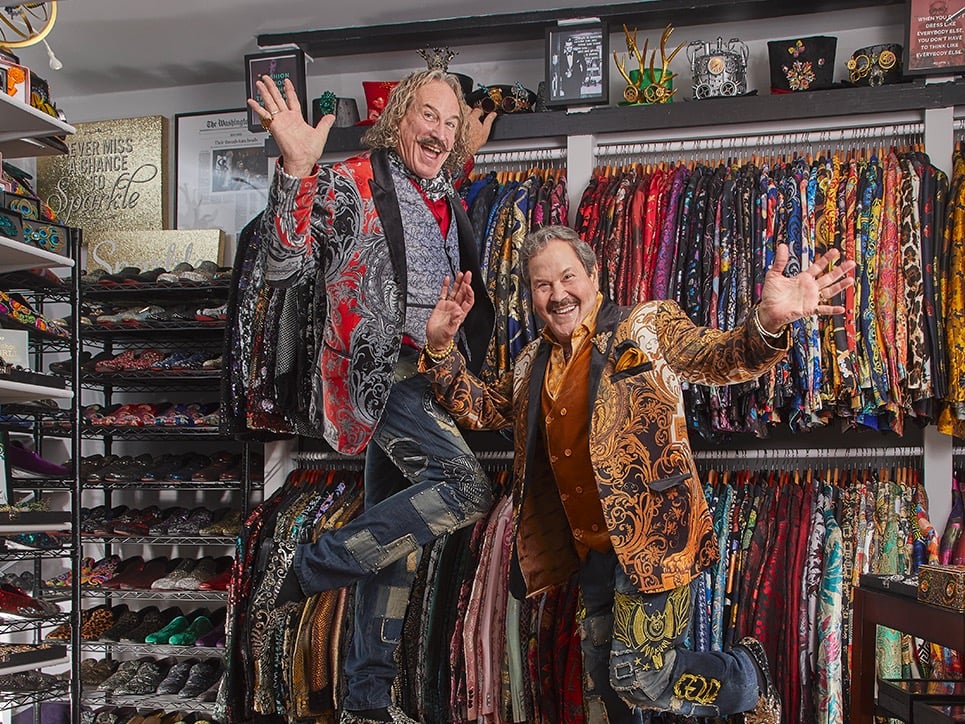Last spring, Liz Weber, 47, looked in a mirror and saw her mother's face. There were deep lines around her nose and mouth–nasolabial creases, they're called–and the beginningsof jowls.
Weber already had used Botox injections to smooth out the lines in her forehead. And, thanks to collagen injections, she says: "I gave myself new lips as a birthday present."
But Botox and collagen wouldn't fix the nasolabial lines or jowls. Until recently, only a facelift would do that. Weber says she wasn't ready for surgery.
Then her dermatologist, Marilyn Berzin, offered something new. She and her partner, Dr. Dale Isaacson, were using a new technique called Thermage that employs radio frequency to tighten tissues under the skin. Weber wanted to try it.
Berzin coated Weber's face with numbing cream and gave her Valium to lessen the pain. Then Berzin touched each inch of Weber's lower face and neck with an instrument that sends heat to the collagen in the lower layer of skin.
"It hurt like a son-of-a-bitch," Weber says, comparing it to the sensation of being stung by a bee–repeatedly. It took 30 to 45 minutes to treat her cheeks and neck. As soon as Berzin stopped, the pain went away.
Weber did not see immediate results, although her husband said her skin looked "fresher." A month later, she was in San Diego to make a presentation and caught a glimpse of herself in a mirror.
"I started screaming," Weber says. "My jowls were gone. The lines around my mouth were gone. My face looked ten years younger." Weber now wants to do her forehead and under her eyes.
Radio-frequency machines have been around for years, according to Dr. Tina Alster, a dermatological laser specialist in DC. What's new is the addition of a mechanism to cool the top layer of skin while heating the under layers, so that the top layer is not injured.
Thermage–also called ThermaLift or ThermaCool–tightens collagen fibers and stimulates new collagen. Collagen is a protein that toughens skin, bones, and ligaments. The collagen underpinning the face and neck acts as a meshlike support to keep skin from drooping and sagging. After Thermage, new collagen is produced for about six months, Alster says.
She recommends Thermage for patients in their thirties, forties, and early fifties if they are beginning to see cheek or neck laxity. "It's a nice way to buy time if you don't want a surgical lift," Alster says. "Older patients, in general, tend not to respond."
Berzin and Isaacson say the procedure is so new that they're still revising it. They no longer apply numbing cream, Isaacson says, because patients have experienced less pain without it. They now give preoperative sedation and painkillers with codeine.
They are also using multiple passes with lower frequencies, which, they claim, yields tighter skin and more new collagen. Isaacson and Berzin have found Thermage is also effective in tightening the abdomen and plan to use it to firm upper arms, hands, and knees.
Although the treatment is painful, patients leave the dermatologist's office feeling fine, physicians say. Their skin may look a little pink, but less so than if the person had been in the sun.
Not everyone is enamored with Thermage. Bethesda dermatologist Mark Jaffe had ordered a machine but canceled. "You can't tell who it's going to work for," Jaffe says. Alster agrees that the results vary considerably from patient to patient.
"The pain factor is serious," Jaffe says. An Allure magazine reporter who tried Thermage described it as feeling like her face was melting. She did not see dramatic results.
As we age, sun exposure, smoking, heredity, and years of smiling and frowning cause brown spots, wrinkles, and lines on our face. Our skin's ability to shed dead cells slows down.
Gravity takes its toll. As skin and fat begin to sag, and the muscles and collagen of the face lose strength, full faces and flat necks become flat faces and full necks.
Thermage is only one of the new treatments that promise to erase signs of aging with less risk and recovery time than a facelift. Chemical peels and laser treatments now come in milder versions, to wipe away sun damage and age spots. New fillers, like Botox, can smooth lines and wrinkles during a lunch-hour doctor visit.
These procedures are quicker and less expensive than surgery. But doctors caution patients to have realistic expectations. The techniques won't work for everyone or forever. There can be risks associated with nonsurgical treatments too–especially when powerful instruments, like lasers, are in untrained hands.
Who should do a nonsurgical procedure such as Thermage, dermabrasion, or Botox? Is it safe to have these things done in a salon?
The lines between medical office and spa, dermatology and cosmetic surgery have blurred so much that it is hard to tell the players with or without lab coats.
Both dermatologists and plastic surgeons perform the procedures described in this article. The most important criteria in selecting a physician are the training and experience with the procedure. You don't want to be a guinea pig for a doctor who just bought Thermage equipment and took a weekend course.
African-Americans need to be especially careful, says Dr. Eliot F. Battle, who researched laser treatment at Harvard and now co-owns a "medical spa" in Friendship Heights called Cultura. "With the right technology, we can treat any skin color," he says. The trick is to select the right laser and the right parameters for treatment–or scarring or discoloration may occur.
Battle is just one of several area physicians who have medical spas as adjuncts to their offices, the better to supervise total skin care for their patients, they say. However, even at these spas, some procedures will be done by a licensed aesthetician, often not a physician but trained by the doctor.
Mark Jaffe does not have a spa at his dermatology practice, but he can see the benefit of getting treatments under medical supervision. A chemical peel can cause injury if left on too long–although the acids used in a spa are generally weaker than in a doctor's office. Newly peeled or treated skin is more sensitive to germs, he says, so you want to be sure the instruments are sterile and the surroundings are clean.
Treatments you might get at a spa, such as microdermabrasion, are usually not the same as in a doctor's office, according to Jaffe. Spas must use less-abrasive equipment–which may mean less-dramatic results.
Whether you trust your face to a physician, medical spa, or spa, here's a rundown of ways to take off the years.
Thermage
Recommended for: slightly sagging skin, jowls, and nasolabial creases.
Procedure: As described above, it can be painful as the radio waves are targeted below the skin. But, when it works, results can be dramatic. Because the technique is new, it is hard to predict how long any results last.
Cost: from $1,500 to treat the forehead or neck to $5,000 for a full face.
Gentle Waves
Recommended for: sun damage, fine lines, brown spots, or redness. No effect on deep wrinkles or serious skin problems.
Procedure: Patients sit in front of a panel of light-emitting diodes that stimulate collagen production. The treatment does not rely on heat, so there is no pain or injury to the skin that lasers can cause. Patients can receive treatment, reapply makeup, and be out the door in 30 minutes or less.
Cost: A series of eight to ten treatments is recommended; each treatment costs about $100.
Botox
Recommended for: frown lines in the forehead or between brows.
Procedure: Tiny injections of a low-dose form of clostridium botulinum bacteria paralyze the muscles so you can no longer scrunch your brows and forehead. Lines disappear for up to four months. Repeated injections can "retrain your facial muscles" so you need shots less often, Jaffe says. Some doctors are using Botox in the lower face, but it must be done with care. Too much Botox in the wrong place can leave you expressionless or drooling.
Cost: $250 to $600.
Injectible Collagen, Fat, Restylane
Recommended for: crow's feet, nasolabial creases, deep wrinkles.
Procedure: Collagen, human fat, or Restylane is injected beneath the skin to fill out wrinkles.
Purified bovine collagen–microscopic beads of plastic suspended in a bovine-collagen solution–has been the most popular filler. But some people have allergic reactions, so patients must undergo the extra step of sensitivity testing. Two other forms of collagen approved last year by the FDA, CosmoDerm and CosmoPlast, contain laboratory-grown human collagen, which doesn't cause an allergic reaction. Many area dermatologists have stopped using bovine collagen now that alternatives are available, says Bethesda dermatologist Roberta Palestine. Side effects include redness and swelling around the injection site. Fillers last about three months.
The FDA recently approved the use of Restylane, a hyaluronic acid product, which "is safe and effective for filling moderate to severe wrinkles around the nose and mouth." The effect lasts for about six months. In rare cases, little bumps develop–and last as long as the Restylane does.
The American Society of Plastic Surgeons predicts that hyaluronic acid will soon replace collagen as the filler of choice for wrinkles.
Fat transferred from a patient's abdomen, buttocks, or thighs also can fill in wrinkles on the face. (Although the procedure can be done on its own, it's mostly performed along with liposuction, when fat is being removed from elsewhere.) A physician suctions out the fat, processes it to remove excess fluids, and injects it into the face. Swelling at the treatment site and soreness at the donor site may last a few days. Fat creates a more subtle effect and lasts longer than collagen. Two-thirds of the fat will be absorbed back into the body in three to six months. The remaining third can stay in place for years.
Cost: Depends on the substance and the amount injected. One vial of collagen costs $350 to $500 and would be enough to fill in smile lines around the mouth. Fat transfers are costlier: A series of three injections including storage of the "harvested" fat costs $3,000 to $3,500.
Microdermabrasion
Recommended for: improving skin texture.
Procedure: A spray of fine aluminum-oxide, diamond, or salt crystals removes the top layer of skin along with blackheads, whiteheads, and minor lines. The crystals are immediately vacuumed up along with dead skin. The crystals sting a little, but the process isn't painful. "You'll be a little pink, but you can go back to work," says Jaffe.
Although you will see some immediate results, practitioners recommend a series, often combined with other skin therapies. For example, Marilyn Berzin often prescribes a series of six mud-pack treatments and six microdermabrasion treatments.
Cost: A series like the one Berzin recommends costs about $1,500.
Chemical Peels
Recommended for: sun damage, fine lines, discoloration, fine wrinkles.
Procedure: Peels range from over-the-counter exfoliants that slough off the top layer of skin to deeper peels offered by dermatologists. The depth of the peel is determined by the extent of skin damage.
When dermatologists started doing peels in the '80s, they suggested patients go into hiding for a week or more while treated skin oozed, scabbed, and then peeled, to reveal new skin underneath.
Most chemical peels are much milder than they used to be, says Jaffe. Dermatologists use solutions that cause only slight redness and slight swelling–akin to a sunburn.
Cost: The most common, a TCA peel, costs $250 to $500.
Laser Peels
Recommended for: sun damage, acne lesions and scars, fine lines, discoloration, and fine wrinkles.
Procedure: A beam of intense light is aimed at the skin, either to remove skin or to energize new collagen production. A full-face CO2 laser resurfacing vaporizes the top layer and must be done under sedation. A patient can expect swelling, redness, oozing, and crusting for a few weeks afterward.
Several newer, gentler lasers are called "nonablative" because they do not sear the skin to the same extent. But they do not promise the same results. An erbium laser dimishes scars, acne depressions, and fine lines. A Cool Touch or SmoothBeam laser stimulates collagen production; the result is plumper, firmer skin, although it can take a few months before there are noticeable results. These lasers also zap the sebaceous glands that produce oil, helping acne-prone skin.
In the process, a nonablative laser also can treat big pores, blotchiness, rosacea, spider veins, and brown spots, according to Roberta Palestine. There are gentler treatments if those are your only skin problems.
Nonablative treatments are often called "photorejuvenation." These treatments take 15 to 30 minutes, and there is no downtime after. As pulses of energy hit the skin, it feels like a rubber band snapping on your face. There is no pain afterward, but the skin may be slightly red for a few hours.
Treatment for rosacea is most effective when combined with oral or topical antibiotics, according to Marilyn Berzin.
Cost: Depends on type of treatment. A series of four to six facial photorejuvenation treatments costs $850 to $1,900.
ClearLight Phototherapy
Recommended for: acne
Procedure: Exposure to an intense blue light kills acne-causing bacteria without damaging surrounding tissue. A clear, odorless solution called Kerastick can be painted on the face to make the skin more sensitive to treatment. The combination of Kerastick and ClearLight can get active acne under control.
The patient feels a stinging or tingling sensation during treatment. There may be mild redness and peeling for one or two days, and the skin will be sensitive to sunlight. Although ClearLight is not effective for all types of acne, it kills the bacteria that cause papulo-pustular acne–lesions are healed and new ones don't form. A big bonus: Precancerous cells are eliminated in the process.
Cost: Ranges from $90 to $150. It may take a series of eight treatments for best results.

















